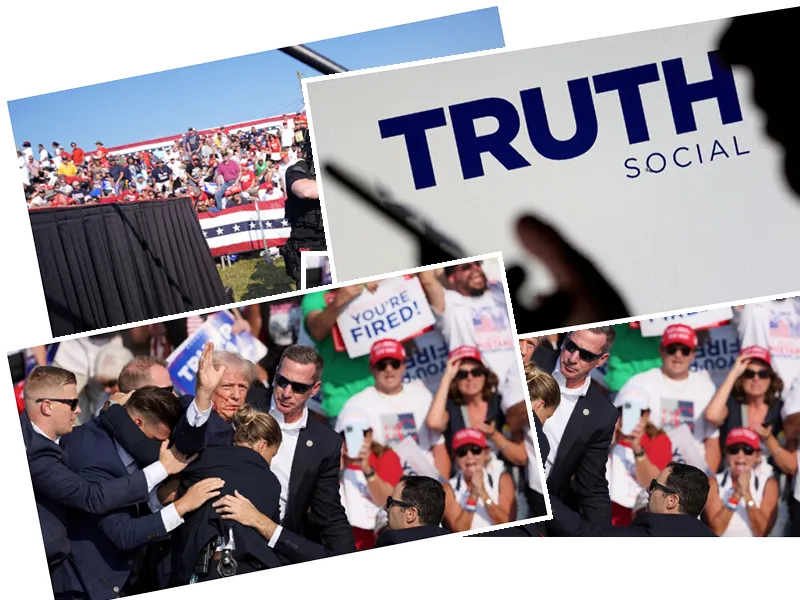The assassination attempt on former President Donald Trump at a campaign rally in Butler, Pennsylvania, has sparked a frenzy of conspiracy theories and misinformation across social media platforms. The incident, which was captured in numerous videos by both professionals and amateurs, has provided fertile ground for various alternative narratives to flourish.
Political scientist Julien Giry, speaking to AFP, highlighted the predictability of such conspiracy theories emerging in the wake of the attack. He noted that the extensive footage available allows for the creation of alternative discourses, bolstering claims that Trump is battling against hidden forces or the so-called 'Deep State.' This term, popular among right-wing extremists, refers to an alleged secretive shadow government pulling strings behind the scenes.
One of the most pervasive theories circulating online is that the assassination attempt was staged by Trump himself to gain sympathy and boost his chances in the 2024 presidential election. This theory gained significant traction on X (formerly Twitter), where the hashtag 'staged' quickly became a trending topic. Despite the lack of evidence supporting these claims, they have reached millions of users and continue to spread.
Following the FBI's identification of the suspected perpetrator, Thomas Matthew Crooks, fake accounts and misinformation about his motives proliferated on social media. Some users falsely claimed that Crooks was still alive and that the FBI had fabricated details about the incident. Others pointed fingers at President Joe Biden and the CIA, alleging without evidence that they orchestrated the attack to eliminate Trump.
The reaction to the assassination attempt has been particularly intense on Truth Social, a platform launched by Trump in 2022. The site, which has become a hub for Trump supporters, saw a surge in posts glorifying Trump and spreading conspiracy theories. Hashtags like '#TrumpAssassinationAttempt' and '#SecretService' trended as users shared images and messages portraying Trump as a divinely protected figure.
In addition to the baseless claims of a staged assassination, some conspiracy theorists have drawn parallels to historical events such as the assassination of John F. Kennedy and the attempt on Ronald Reagan's life. These comparisons have fueled further speculation and distrust in the official accounts of the incident.
As the investigation continues, questions remain about the security measures in place at the rally and how the shooter was able to carry out the attack. However, even a thorough investigation is unlikely to quell the conspiracy theories that have taken root. The spread of misinformation in the digital age ensures that such narratives will persist, regardless of the facts.
- The rapid spread of conspiracy theories following the assassination attempt on Donald Trump underscores the challenges of combating misinformation in the digital age. Social media platforms, with their vast reach and real-time communication capabilities, have become breeding grounds for such theories.
- Experts like Julien Giry and journalist Anthony Mansuy highlight the role of socio-political trauma and the ease of access to social networks in galvanizing individuals into collective hysteria. The phenomenon is reminiscent of past events, such as the assassination of JFK, where large segments of the population remain convinced of a conspiracy despite official investigations.
- Truth Social, the platform owned by Trump, has played a significant role in amplifying these conspiracy theories. The site, which has five million active users, is known for its strong pro-Trump sentiments and has become a key venue for spreading messages that glorify Trump and vilify his perceived enemies.
- The persistence of these conspiracy theories poses a significant challenge for authorities and highlights the need for effective strategies to address and counteract misinformation. As the narrative continues to evolve, it is clear that the digital landscape will remain a battleground for truth and falsehood.






